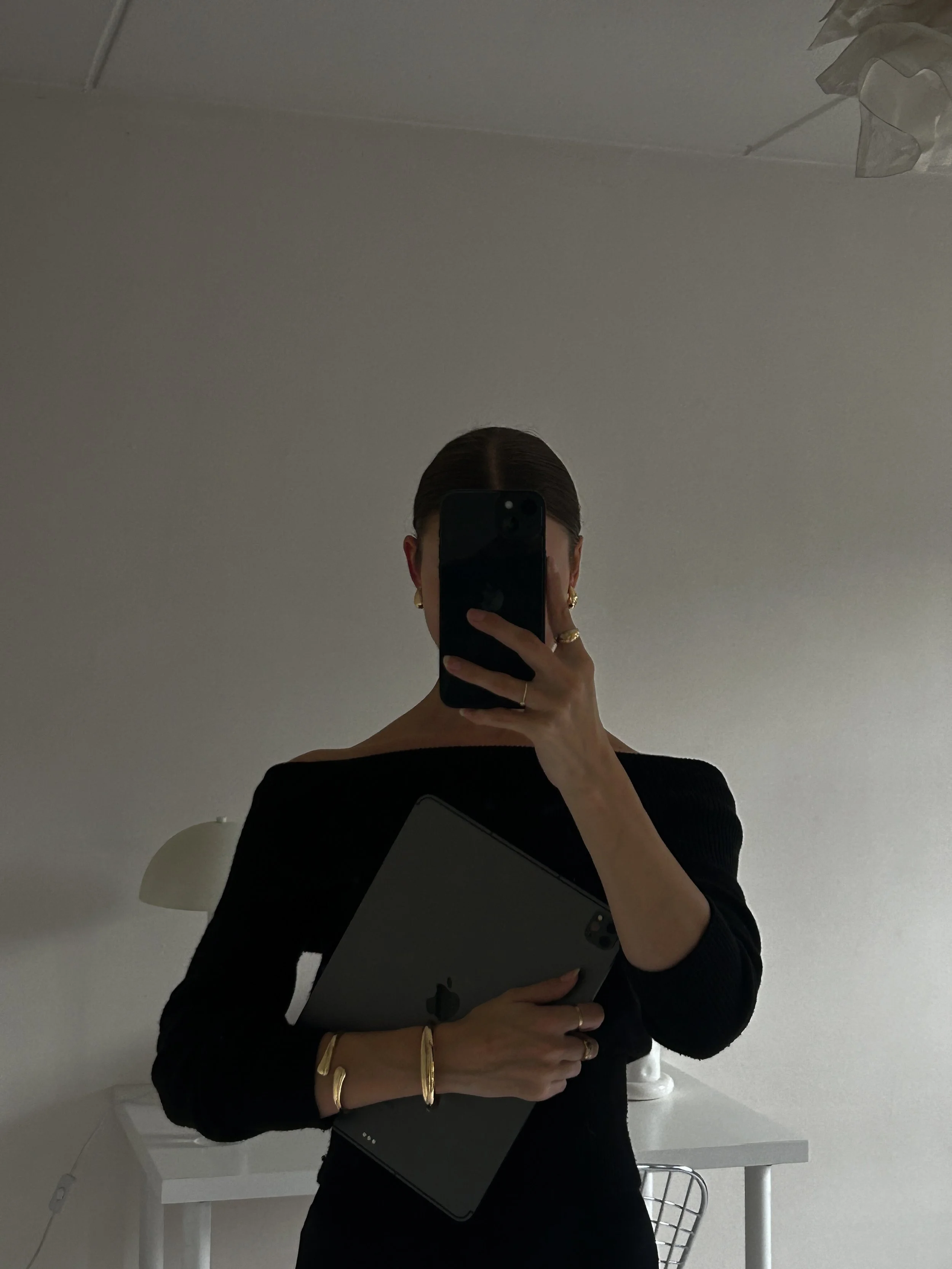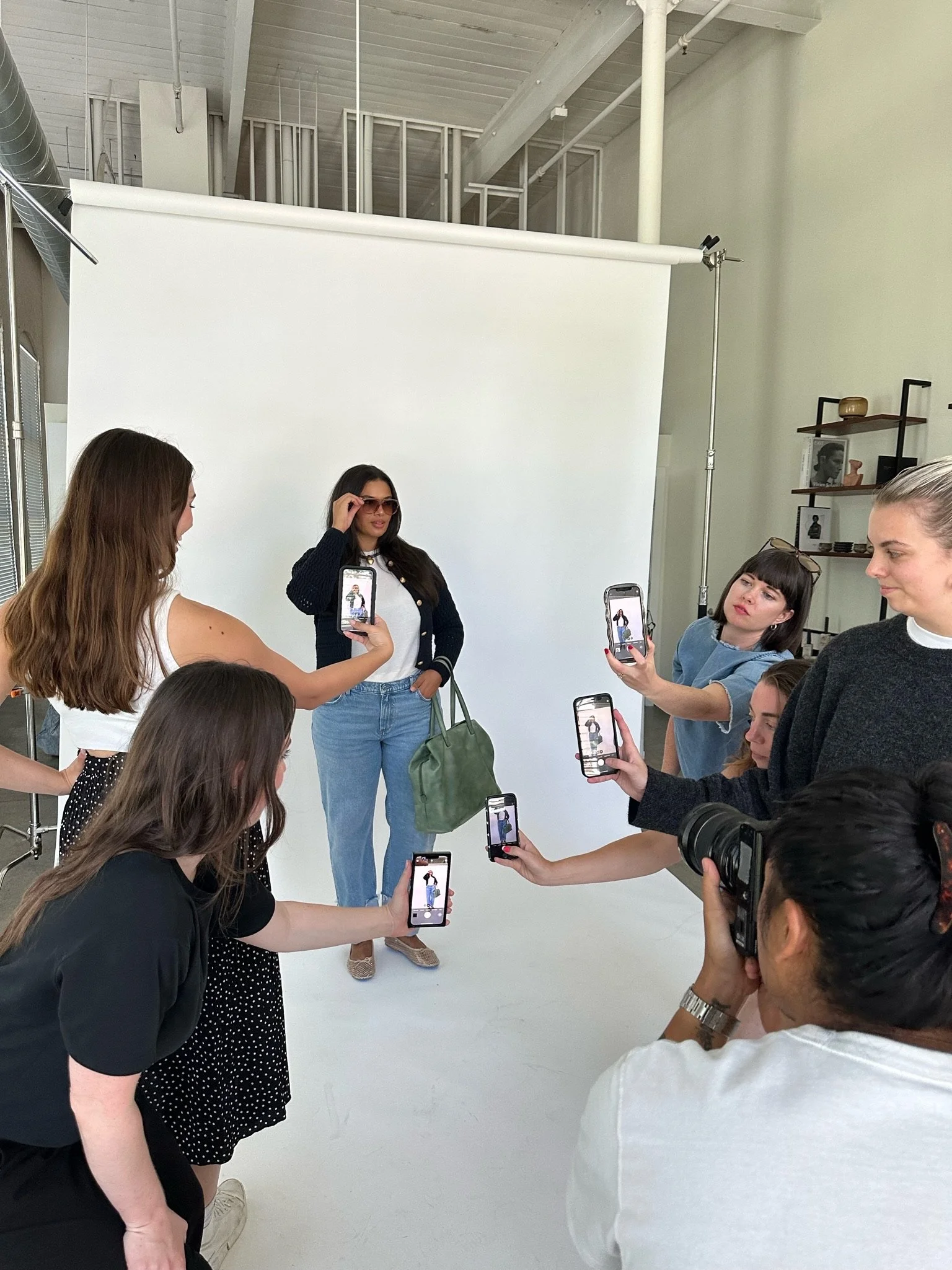Which Marketing support is right for your business. Agency, Freelancer or In-house?
How Much Should You Be Spending on Marketing?
A helpful rule of thumb for purpose-led businesses is to allocate minimum 15–20% of your monthly revenue to marketing — especially if you're in growth mode. This includes all marketing activities: strategy, execution, content creation, software, and ad spend.
So, if your business is generating $20,000/month, a healthy marketing investment would fall between $3,000–$4,000/month. This ensures you’re building brand equity and visibility without underinvesting in your own growth.
The rest of this guide will help you explore the best way to allocate that budget based on your business model, internal capacity, and long-term goals.
If you're here, chances are you're at a crossroads in your business growth. You've either outgrown DIY marketing, feel dissatisfied with your current support, or know your digital presence needs more consistency, clarity, or direction.
But where do you go from here?
This article is designed to help you compare the most common marketing support options available today, whether you're a sole trader in the wellness space, a clinic scaling your reach, or a lifestyle brand launching a new product line.
We’ll look at four key pathways:
Hiring an in-house team
Working with freelancers
Partnering with a large digital marketing agency
Collaborating with a boutique social media agency
For each, you’ll find:
A simple breakdown of how it works
Key pros and cons
Who it’s best suited for
Questions to ask yourself before committing
1. Hiring an In-House Marketing Team
What it looks like:
Building an in-house team means employing staff directly to manage your brand’s marketing, from planning and content creation to digital advertising, SEO, and reporting.
For some businesses, this offers stability and a sense of control. For others, it becomes a costly and time-intensive challenge.
Here’s a look at what it would cost to assemble your own full in-house marketing team in Australia:
Social media manager: ($95,000 PA) - Responsible for content planning, briefing content creation, monitoring social media channels, tracking trends, community engagement and reporting.
Marketing Assistant ($65,000 PA) - A junior role responsible for creation and distribution of marketing collateral, support in marketing research, copywriting, proofreading, monitoring analytics.
Graphic designer: ($78,000 PA) - Responsible for editing website design, publications and advertisement and creating consistent on-brand marketing graphics for multiple channels to provide to the social media manager and marketing assistant.
Paid Performance Manager: ($125,000 PA) - Responsible for the execution and management of paid advertising channels ( Facebook, Instagram, TikTok, Google etc.)
Digital Marketing Manager; ($130,000 PA) - Senior Responsible for the brand strategy and management of execution across all digital marketing efforts, this individual maps your customer journey, builds your client personas and identifies the best place, time and message for your team to market.
Search Engine Optimisation Manager: ($100,000 PA) - Responsible for tracking SERP, and SEO opportunities for the business to build a digital presence organically for long term ROI. This individual works collaboratively with the digital marketing manager to inform the overall business strategy, website copy and product/service growth opportunities.
Total: $593,000+ per year (excluding super, tools, training, or leave cover)
For enterprise organisations, or national NDIS providers, this structure may be essential. But for small to mid-sized brands, it often leads to a scaled-down version of this team, usually just one or two junior hires trying to wear every hat.
And this is where it gets tricky.
Many businesses hire one junior marketing assistant and expect them to do the work of six people.
If that’s your current plan, here are a few questions to consider first:
What results are you expecting — and in what timeframe?
If you’re a B2C brand, marketing volume and speed matters. If you’re B2B, a leaner structure may work.Is “good enough” good enough?
Many businesses settle for someone who can “do a bit of everything” — but complex channels like SEO, paid ads, and strategy each require deep skill and constant upskilling. They are individual professions for a reason.Do you have someone internally to lead them?
Without clear direction and mentorship, even your best junior hire will struggle to drive results long-term.Pros:
Deep understanding of your brand and team culture
Greater control over daily communication, approvals, and priorities
Long-term skill-building tailored to your business
Having an in-house marketing team = great content everyday with micro influencers that humanise the brand
Cons:
Higher ongoing costs (salaries, super, leave, training)
Significant financial investment and fixed overheads
Requires strong leadership and ongoing performance management
Limited bandwidth unless supported by external specialists
Requires strong leadership and clear marketing direction internally
Staff are your greatest asset, but also your biggest liability - if they leave, you have to start again with training
May need multiple hires to cover the full marketing mix (strategy, content, design, email, ads, etc.)
Best for:
Large organisations with high marketing budgets
Businesses needing daily, internal brand support
Teams with strong marketing leadership and mentoring capacity
Ask yourself:
Do we have the resources to hire, train, and retain multiple roles?
Are our goals best served by internal control or external expertise?
Can one person reasonably meet all our needs, or are we expecting too much?
We’d always recommend using a local talent agency, they will source the best of the best to form your dream team
Newcastle: Eight & New Tech People
Brisbane: Hunt & Co
Sydney & Melbourne: OOMF
Australia Wide; Creative Store
The Diamond That Cracked: A Cautionary Tale for Cost-Cutting Brands
TRUE STORY ( names removed because we don’t want to be sued) ;There once was a well-known Australian jewellery company — 17 stores nationwide, a thriving online store, and decades of brand equity polished to perfection by its original owners.
But like many legacy brands, they began mistaking survival for success.
At the heart of their marketing was a single senior graphic designer — a one-woman orchestra. Every month, she juggled the window decals, the store catalogues, the product shoots, the website banners, the EDMs, the Christmas campaigns (yes, even the 60-page catalogue) — all with barely a breath between.
She didn’t just design. She carried the brand.
But pressure doesn’t make diamonds — not when it comes from burnout.
Instead of investing in a team or upskilling support, leadership decided to cut costs. They let the senior go and replaced her with a junior designer straight out of university. $55K salary. Job done. Budget saved.
Or so they thought.
The sparkle began to fade. Jewellery was photoshopped onto wrists at impossible angles. Billboards went live with pixelated edits. Elle Magazine ran a $1,000 ad — with a typo. Brochures were printed with the wrong prices. The once-cohesive brand? Unrecognisable.
And the blame? Fell squarely on the junior.
But here’s the thing: you can’t expect a freshly cut stone to carry the weight of the crown.
No experience. No support. No strategy. Just mounting pressure and unpaid overtime, until even that quiet glimmer of enthusiasm dulled under unrealistic expectations.
Meanwhile, their competitors had full creative teams. Strategists. Copywriters. Paid ad specialists. SEO leads. And a clear digital marketing roadmap.
This company? Hoped a single junior could match the output of a 6-person agency.
It didn’t just stall their growth. It set them back years.
Moral of the story?
You don’t scale by squeezing.
You scale by investing — in strategy, skill, and sustainability.
Because cutting corners in your marketing might save you money today…
But it’ll cost you your brand tomorrow.
2. Working with Freelancers
What it looks like:
You hire independent contractors for specific projects, like a rebrand, content shoot, email sequence, or website.
Pros:
Flexible and cost-effective for project-based needs
Access to specialised skills without a long-term commitment
Ideal for founders who know exactly what they need
Cons:
Can become fragmented without a unifying strategy or creative direction
You’ll need to manage the project scope, timeline, and quality control
Harder to ensure brand consistency across platforms and deliverables
Best for:
Brands who already have a strong strategy and just need execution
Startups with small budgets and occasional one-off needs
Founders who enjoy managing people and processes
Depending on scope- perfect for sole traders with $4,000+ in monthly revenue
Ask yourself:
Do I have time to brief, coordinate, and QA freelance work?
Am I confident in my overall marketing direction?
Is this a one-time project or part of a bigger picture?
Average Retainer or Project Cost:
Freelance designers: $150+/hour
SEO/content specialists: $100–$200/hour
Web developers: $3,000–$15,000 per website
How to find great freelancer?
Behance - browse portfolios of fantastic work and select the freelancer’s style you prefer
Stalk Agencies on Linkedin - Super cheeky, but why not cut through the overheads and go straight to the specialist.
3. Partnering with a Large Marketing Agency
What it looks like:
You outsource your marketing to a full-service agency with multiple departments, offering everything from strategy and branding to SEO, paid ads, and creative.
Pros:
Access to full-stack services and resources under one roof
Great for complex campaigns that span across channels ( Print, Radio, Billboards, Etc)
Teams with experience across a wide range of industries and brands
Dedicated Account Manager
Cons:
Higher retainers and longer onboarding periods
Retainer cost doesn’t always equal value, Large Agencies have lots of overheads and expensive salaries to cover. And that is usually what you are paying for
Often prioritise enterprise-level clients, slower comms and approvals
Less tailored approach for small-medium, niche brands
Requires an in-house team member to manage the relationship and brief, Agencies do not hand hold. You need to know what you want and be able to communicate that to get results.
Best for:
Corporates, councils,
Large organisations with $100,000+ monthly revenue
Brands with detailed marketing plans and a bigger budget
Teams with internal marketing managers to liaise with the agency
Ask yourself:
Will my brand be one of many, or a priority?
Do I need advanced services like market research or international campaigns?
Can I afford higher retainers for longer-term support?
Do you know what you need and do you have the time to brief it?
Average Monthly Retainer
Retainers typically range from $5,000–$10,000+/month depending on scope and agency scale
Australia’s Best Full Service Marketing Agencies ( in our opinion)
We are Social - Envision the biggest A-list influencers promoting your product? We are Social, will make it happen
Hello Social - Want to compete with global brands like Uber and Amazon? This team will bring your product/service launch to the next level.
The Mark Agency - Want a full tv advertisement production? These are your guys
4. Collaborating with a Boutique Marketing Agency
What it looks like:
You partner with a small, specialist team that focuses on a niche, for example, health, wellness, or lifestyle brands. Services vary, but often include brand strategy, web design, content creation, social media, and campaign execution.
Pros:
Personalised service and a collaborative partnership
Nimble, flexible, and often more affordable than large agencies
Strong brand alignment, especially when the agency shares your values or works in your sector
Cons:
Smaller teams may have limited capacity or longer lead times during peak periods
Some services (e.g. in-house video, paid ads) may be outsourced
Not always suited for brands wanting hyper-scaled or global expansion
Best for:
Purpose-led businesses looking for long-term strategic support
Businesses with a minimum $15,000 monthly revenue
Founders seeking a mix of strategy, execution, and human connection
Founders seeking 1:1 support to ideate and open to new ideas and suggestions
Wanting to feel like you have a part-time in-house marketing team without the overheads
Ask yourself:
Do I want a long-term marketing partner, not just a service provider?
Does my brand value alignment, strategy, and storytelling over hype?
Am I comfortable working closely with a smaller team?
Do you want ideas, or do you just want someone to execute ?
Average Retainer or Project Cost:
Typically $3,000–$6,000/month depending on services and scope ( The Social Theory'‘s Packages start from $1,700 month)
Some boutique agencies offer project-based packages starting from $3,000
Australia’s Favourite Boutique Social-First Agencies
Born Social - Specialising in perishable product marketing on social media
Spark Social - B2B Social Media Marketing just got easier
The Social Theory - Want to build a community of lifelong customers? Want to create a sense of belonging and identity to your business? Community-first marketing for purpose-led businesses is The Social Theory’s specialty.
Final Thoughts: No One-Size-Fits-All
Every business is different. Your team size, budget, capacity, and vision all matter when deciding which marketing path is right for you.
If you're in the research phase:
Map your goals and current gaps
Audit your internal capacity vs. what can be outsourced
Speak to multiple providers to assess style and fit
The best marketing decision? One that aligns with your stage of growth, your values, and your energy.





